Timesheets offer a simple and convenient way to track project durations and the efficacy of every software developer in your team. They also help you calculate billable hours at the end of each pay cycle to make payments and create client invoices.
To make the timekeeping process consistent and faster, you can opt for a customized software development timesheet template.
In this article, we’ll share four customizable Excel timesheet templates for your software development projects.
However, a manual timesheet has a few limitations that can impact your business. We’ll discuss these limitations in detail and also introduce you to three highly efficient timekeeping alternatives.
Table of Contents
- 4 downloadable software development timesheet templates
- How to download and use software development timesheets
- 3 major disadvantages of manual timesheets
- 3 efficient software alternatives to manual timesheets
Let’s get started.
4 downloadable software development timesheet templates
Below are four spreadsheet-based printable timesheet templates in daily, weekly, bi-weekly, and monthly formats. You can download and customize these free templates for your timekeeping and payroll workflows.
1. Daily software development timesheet template
A daily timesheet template is a convenient choice if you have freelance developers who get paid on an hourly basis. Use this template to track their shift start and end times, total work hours, and total daily payments.
You can also use it as a project timesheet template (for client billing) since it’s structured to record time for different projects and tasks.
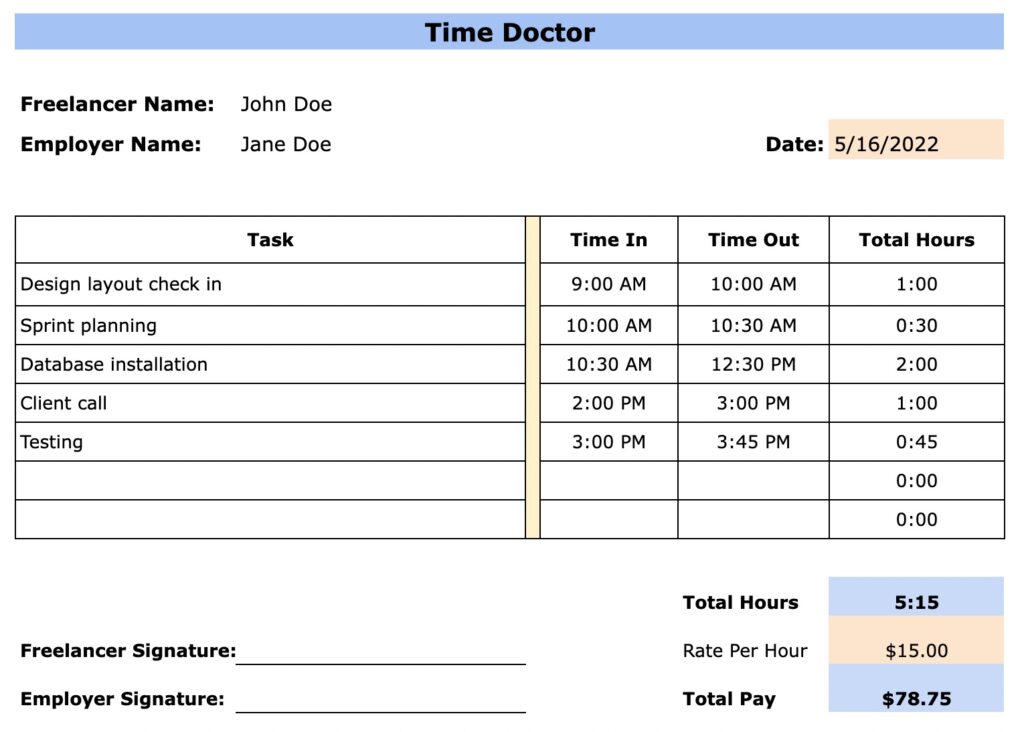
Download the Google Sheets Daily Time Card Template here.
2. Weekly software development timesheet template
A weekly timesheet template is another option for calculating the billable hours of your on-contract development team.
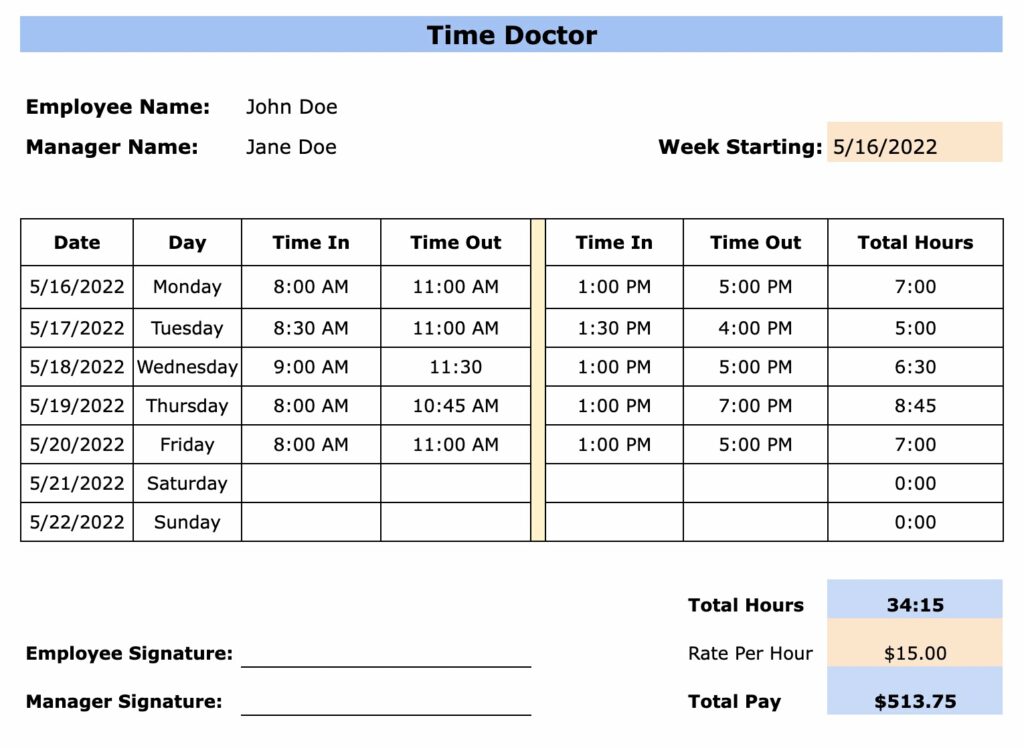
Download the Google Sheets Weekly Time Card Template here.
3. Bi-weekly software development timesheet template
This biweekly timesheet template is suitable for software companies that pay their employees every two weeks or semi-monthly.
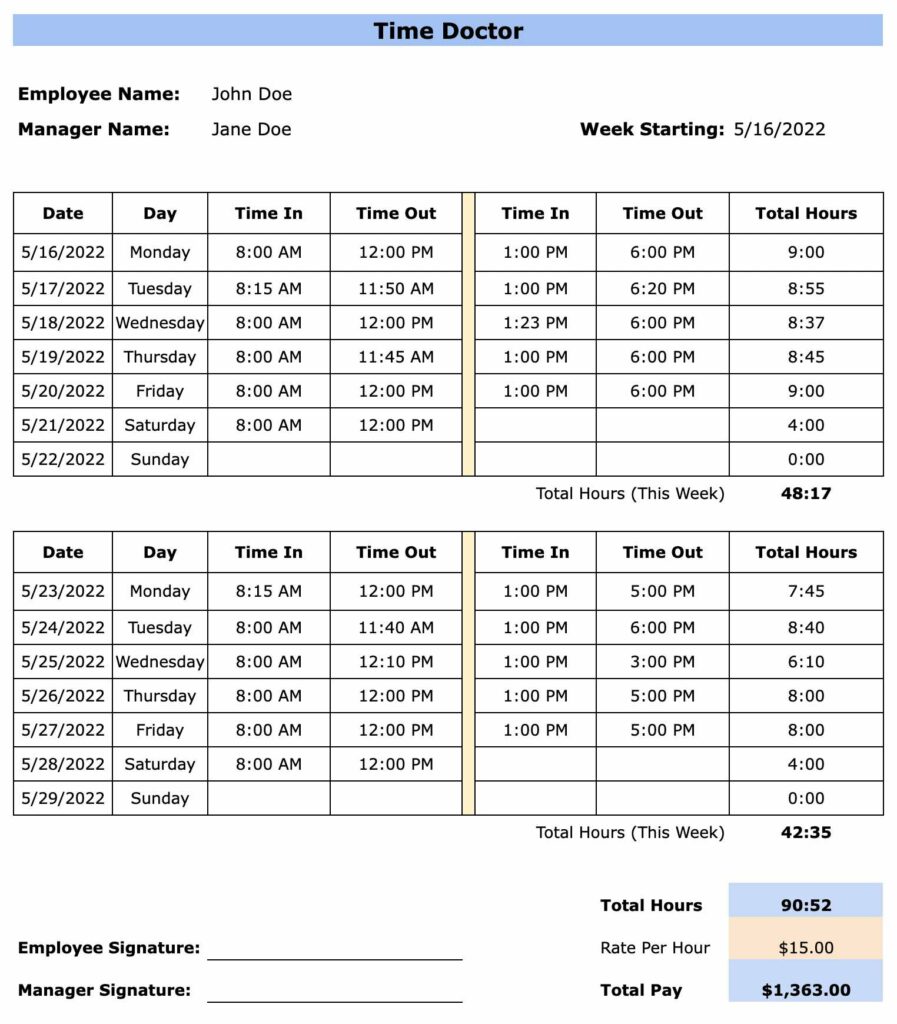
Download the Google Sheets Bi-Weekly Time Card Template here.
4. Monthly software development timesheet template
If you have a full-time in-house development team, a monthly timesheet template is the way to go. Here you can see the entire time data for an employee along with the weekly breakdown.
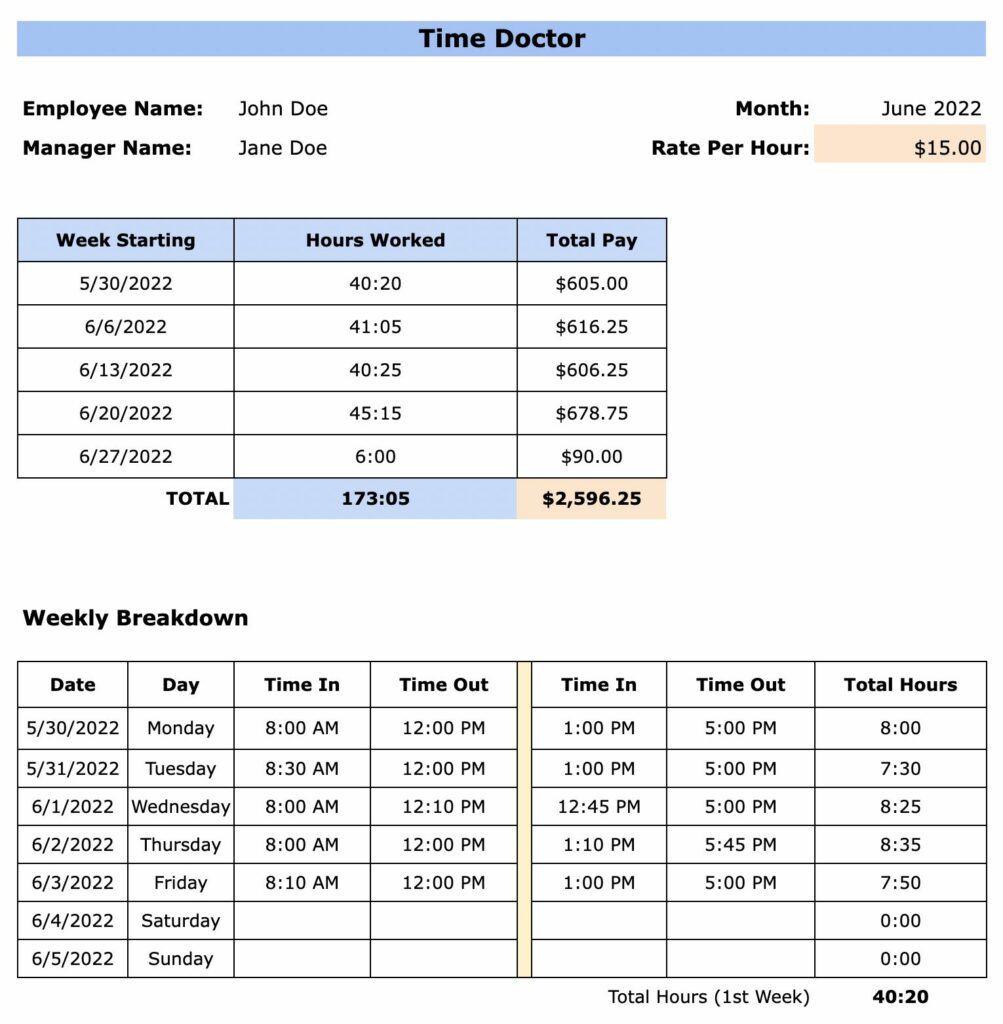
Download the Google Sheets Monthly Time Card Template here.
Now that you’ve found a suitable template let’s see how to use it.
How to download and use software development timesheets
Here’s a step-by-step procedure to use any of the above timesheet templates for your timekeeping needs:
Step 1: Download and save
Click on a daily, weekly, bi-weekly, or monthly template link to open it as a Google Sheet document. Next, select the ‘File’ from the menu bar and click the Make a Copy option. Enter a preferred name and location and hit the Make a Copy button.
You now have your customizable copy of the template. You can also export it in multiple formats like PDF, XLS, etc.
Step 2: Customize the template
Once you’ve created a copy of the template, you can customize it with general information like:
- Freelancer/Employee name
- Employer/Company name.
- Manager/Supervisor name
- Starting date.
- Rate per hour for the employee.
Step 3: Fill in the timesheet
The template is now ready for your team members to fill in their time data. They’ll need to enter:
- Their shift start and end times.
- Start and end times for individual tasks/projects (daily timesheet).
- Their signature at the end of the pay period.
- Leave information.
Based on these entries, the total work hours of an employee (for the pay period) will get updated automatically.
Step 4: Review and process
At the end of the pay period, managers can review the timesheets and look for any discrepancies.
You’ll see Total Pay at the bottom right corner of the timesheet. This field is automatically populated based on the total work hours and the employee’s hourly rate.
If there are any errors in the data, you can send it back to the employee or ask for an explanation.
After a final review, managers can sign the template and forward it to the payroll/HR team for further processing.
You can use these timesheet templates in digital format or take a printout and hand it over to each employee. There’s no doubt that these simple timesheet templates make timekeeping more convenient.
However, spreadsheets and paper timesheets have some drawbacks that can hamper your timekeeping accuracy and efficiency.
3 major disadvantages of manual timesheets
Here are three limitations of using manual timesheets:
1. Inaccurate time logs
Manual timesheets typically go through many human edits, right from the concerned employee to admins, managers, payroll personnel, etc. This significantly raises the chances of a human error creeping in from time to time.
These hard-to-spot errors may go unnoticed until payroll processing and, in the worse case, after the payment is credited to the employee accounts. This increases the overall processing time and results in dissatisfied employees.
Another critical thing to consider is that with manual timesheets, there may be a difference between an employee’s reported and actual work hours.
Practices like time theft and buddy punching are quite commonplace and may be difficult to catch with manual timekeeping. The resulting time and productivity loss may impact your profitability in the long run.
2. Pain to update and modify
Timekeeping may often present you with unpredictable scenarios where you’d need to make changes to your data sets. For example, an influx of new tasks that weren’t part of the original project schedule or a regular task taking longer than usual.
Unfortunately, manual timesheets aren’t the most viable options for these scenarios. Besides being error-prone, they’re a hassle to update or edit.
In the case of an ad-hoc client request, updating a Microsoft Excel or Google Sheets document with thousands of records would be time-consuming. Besides, it increases the risk of errors and may create discrepancies in other inter-related records. These errors may prove costly and may affect your project negatively.
3. Risk of data loss
Companies typically store employee time records safely for a set period. It helps them stay compliant with labor laws like FLSA and also leverage this historical data to get key productivity and project cost insights (through data analytics).
However, as manual timesheets get passed on from one person to another, the chances of time data getting deleted or corrupted are quite high. Besides, a spreadsheet-based timesheet isn’t meant for storing data. Admins usually write over older records or delete them to save space.
This data loss could lead to companies facing lawsuits, financial losses, and missing out on business insights.
These limitations of manual timesheets can prevent you from fully leveraging the benefits of time tracking.
So how can you overcome these limitations?
By upgrading to an advanced timesheet or time card tool.
3 efficient software alternatives to manual timesheets
Here are three digital timekeeping solutions that can replace your traditional timesheets and make the entire process more streamlined and efficient.
1. Time Doctor
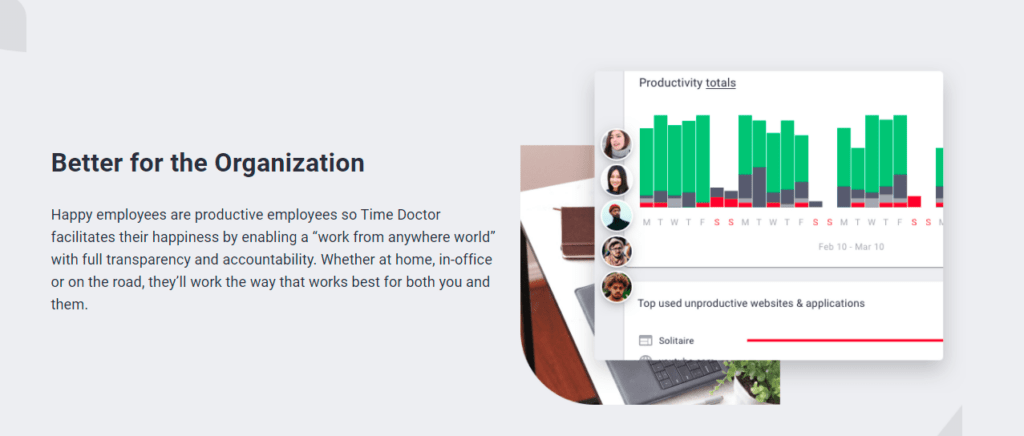
Time Doctor is an employee timesheet and time tracking software that’s trusted by large and small businesses, such as Ericsson, Keller Williams, Thrive Market, etc.
It’s a perfect choice for businesses looking to upgrade their timekeeping system from traditional systems to more efficient and reliable ones.
Time Doctor works great whether you have an in-house development team or ar distributed remote team.
You programmers and software engineers can use powerful features of this time tracking tool in many ways, including:
- Desktop applications for Windows, Mac, and Linux.
- A Mobile app for Android.
- Google Chrome extension (for supported integrations).
Key features
Here are some key Time Doctor features:
1. Convenient time tracking
Your software team can easily track time through two convenient tracking modes.
With its manual or interactive time tracking, they can simply use a start/stop timer to log time.
All they need to do is follow these steps:
- Download the Time Doctor desktop app.
- Create an entry for a new task.
- Press the Start button to begin tracking the time for that task.
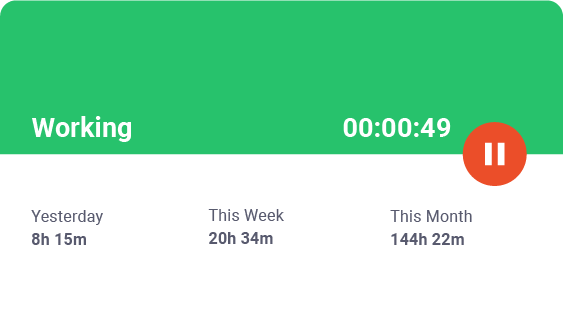
- Press Stop to end the tracking when they’ve completed the task or need to take a break.
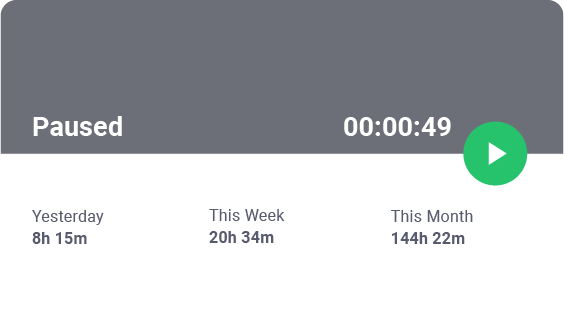
But for those intense coding sessions, you can opt for the automatic time tracking feature. In this mode, the timer starts tracking time as soon as the user turns on the computer.
This way, they won’t have to worry about manually operating the timer and can rather focus on their coding tasks. This mode also helps a project manager monitor their team’s working and time usage patterns.
Time Doctor stores all these tracked time data securely as online timesheets and lets you view them in convenient formats.
2. Work schedules and attendance tracking
Time Doctor has an effective employee scheduling feature that you can use to plan your workforce needs. This feature could be especially beneficial when you have multiple projects running simultaneously and round-the-clock.
You can activate the feature on the Company Settings page.
With the Work Schedule feature activated, you can view a detailed attendance report to track the availability of your developers. With this report, you can:
- View the scheduled start and end times of an employee’s shift
- Their real-time availability status, such as Late, Present, Partially Absent, or Absent.
- The Actual Start Time and the Actual Hours Worked (during the scheduled shift hours).
- Total Time Outside Shifts – shows the total hours worked outside the scheduled shift hours for an employee.
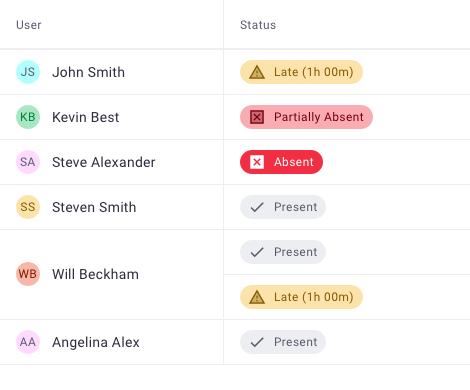
3. Productivity reports
Time Doctor’s productivity reports help you see an employee’s time data in a visual format for easy understanding and to get some vital information insights on their efficiency.
A software project manager can use these insights to make crucial workforce decisions and improve the overall project efficiency.
For example, the Timeline report is like a detailed visual timesheet that shows how an employee spent their workday or workweek.
The Day view in the Timeline reports shows:
- The actual start and end times of an employee’s shift.
- Time spent on specific tasks during the day.
- Time spent not working (on breaks, etc.).
Similarly, the Week view of the report shows the total hours tracked in a week with a daily breakdown.
If you want a project-wise breakdown of an employee’s work hours, Time Doctor has you covered. Its Project and Tasks report is like a project timesheet that shows the time an employee spends on different projects.
Some other useful Time Doctor reports include:
- Activity summary: View active minutes, active seconds, unproductive, manual, and mobile time for each agent over a selected period.
- Hours tracked: Check the total time an employee tracked in a day, week, or during a selected time period.
- Internet connectivity report: Shows a user’s total offline time and the percentage of the day spent offline while tracking time.
- Web & app usage report: Track the applications and websites used by an employee along with time spent on each of them.
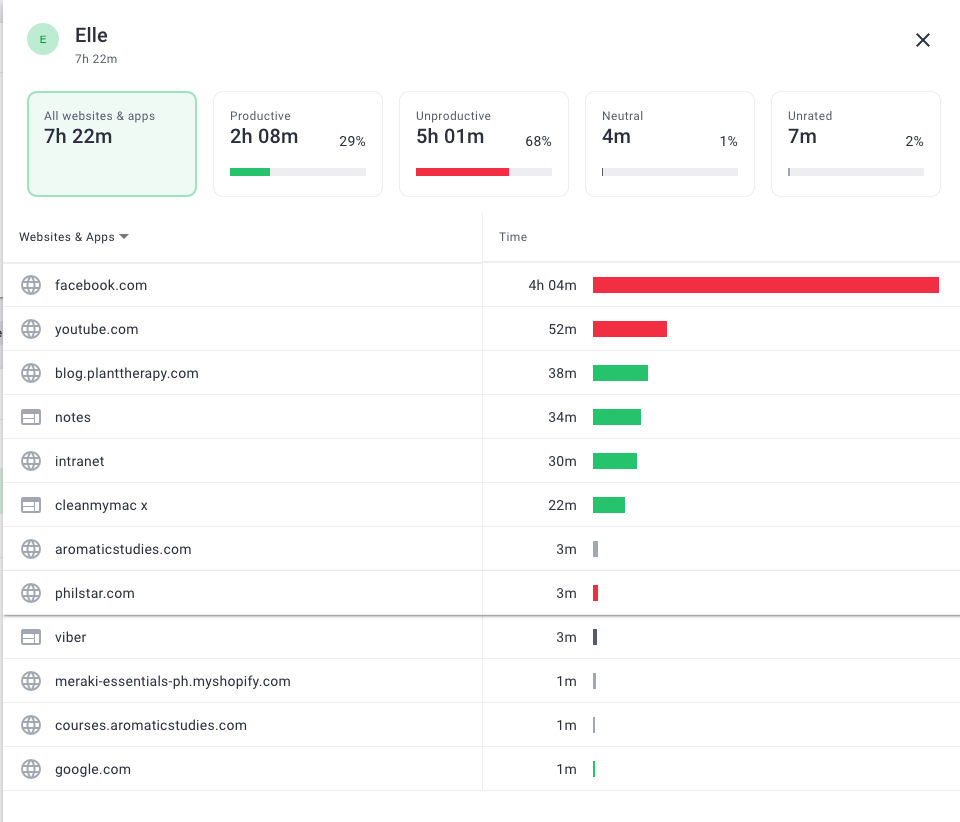
4. Payroll integration
Time Doctor has an integrated payroll system that lets you pay your developers quickly and accurately. If you employ freelance hourly developers, you can set up a separate payment system (for their billable hours) as per their timesheet records.
You can configure your payroll based on:
- Pay period.
- Payment method.
- Payroll currency.
Moreover, you can export your payroll data in multiple formats (CSV, XLS, PDF, etc.) and process it further through popular payroll software and payment gateways like Gusto, Paypal, ADP, etc.
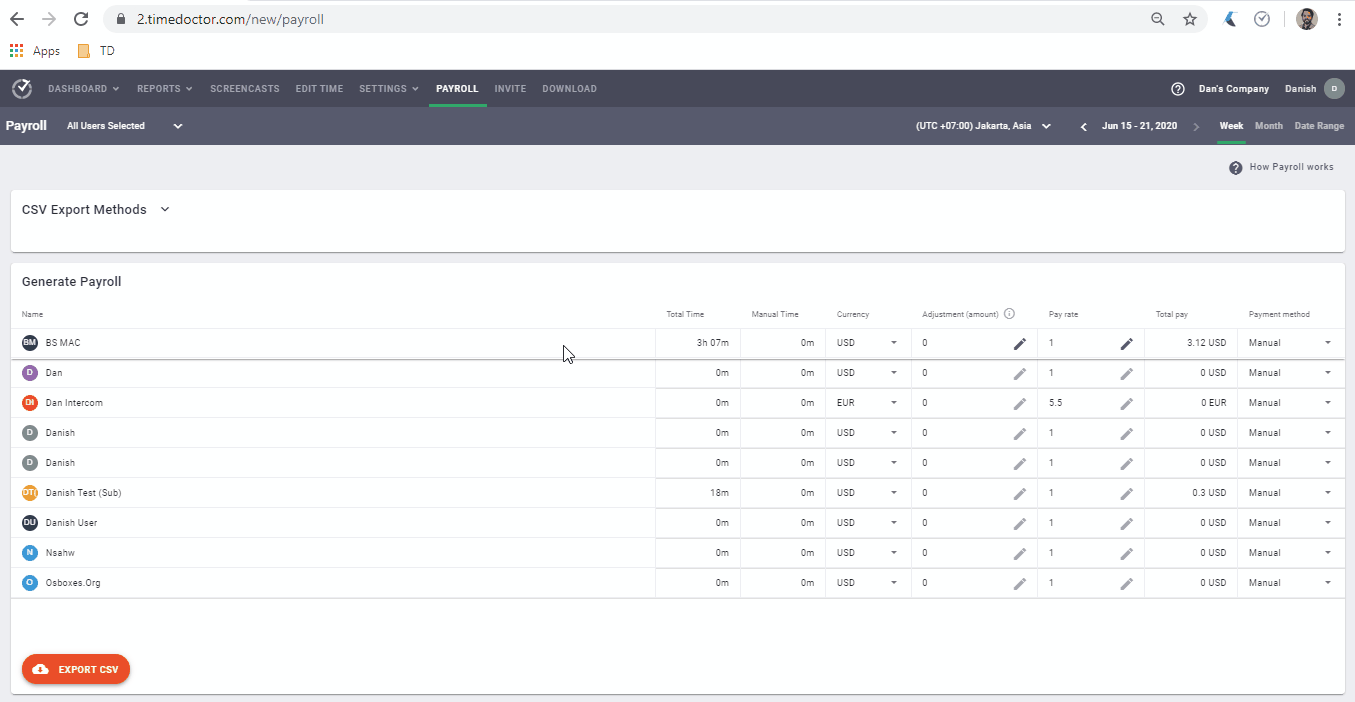
5. Robust chrome extension
A key benefit of using Time Doctor is that you can use it with your existing software without having to switch between multiple apps. With its powerful Chrome integration, Time Doctor integrates with 60+ popular business software, such as:
- CRM: Hubspot, Pipedrive, Salesforce, etc.
- Software Development: GitHub, GitLab, Azure DevOps, etc.
- Project Management: Microsoft To-Do, Zoho Project, etc.
- Collaboration and Communication: Asana, Slack, Jira, Trello, etc.
Your team member simply needs to download the extension for free from the Chrome Web Store to start tracking time.
Explore all of Time Doctor’s powerful features here.
Pricing
Time Doctor offers a free 14-day trial (credit card details not required). Its paid plans start at $7/user per month.
Customer ratings
- G2: 4.4/5 (270+ reviews)
- Capterra: 4.5/5 (400+ reviews)
2. ClickTime
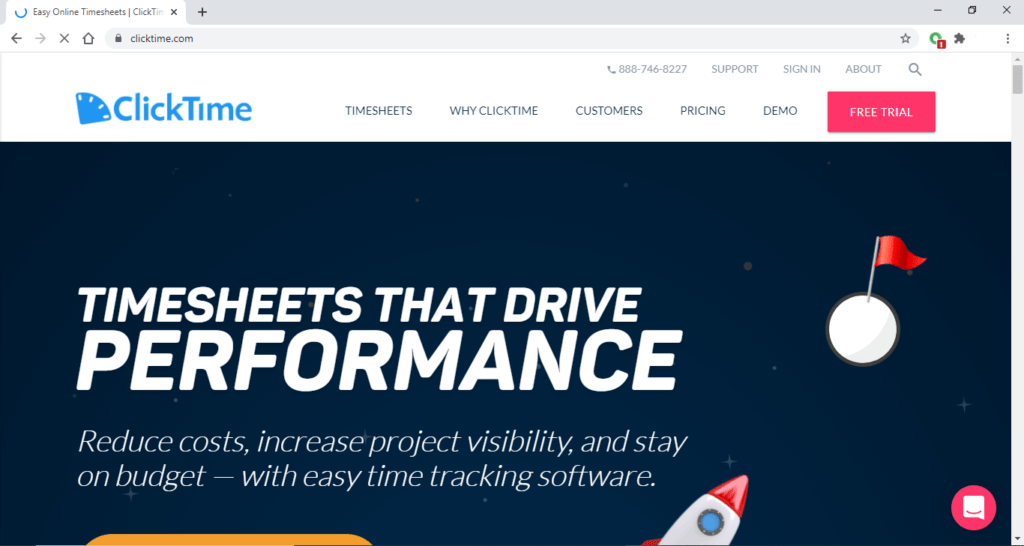
ClickTime is an effective time tracker and timesheet app with useful project management and budgeting features.
Key features
- Automatically records regular hours, overtime hours, cost, time off, etc., and saves them into an online timesheet.
- Quick and easy timesheet approval workflow.
- Gives you access to pre-built reports and lets you create custom dashboards.
Pricing
ClickTime offers a 14-day free trial. Post that, you can choose from plans starting at $12/user per month.
Customer ratings
- G2: 4.3/5 (150+ reviews)
- Capterra: 4.6/5 (200+ reviews)
3. ProjectManager

ProjectManager is a work management software suite that offers effective solutions for project timesheets, task management, etc. It’s suitable for software companies, as well as professional services firms.
Key features
- Automatically populates weekly timesheet records.
- Timesheet management features like manual time entry, scheduling, one-click approval, real-time reports, etc.
- Project management features like Gantt Chart, Kanban Board, etc.
Pricing
ProjectManager offers a 30-day free trial. Paid plans start at $14/user per month.
Customer ratings
- G2: 4.4/5 (60+ reviews)
- Capterra: 4.1/5 (300+ reviews)
Final thoughts
Using employee timesheets for your software team is a great way to stay compliant with employment laws and spot productivity patterns within your organization.
Use a suitable free timesheet template from the list above to customize timekeeping based on your payroll and business needs.
However, advanced time management and timesheet software, such as Time Doctor, can make the process much more efficient and bring far-reaching financial benefits. And not to mention the additional functionalities like project and task management, payroll, etc., that make it an indispensable business tool.
So why not try out Time Doctor’s 14-day free trial?

Carlo Borja is the Content Marketing Manager of Time Doctor, a workforce analytics software for distributed teams. He is a remote work advocate, a father and a coffee junkie.


